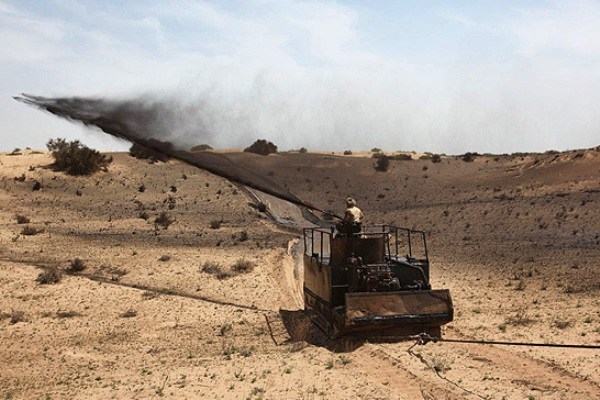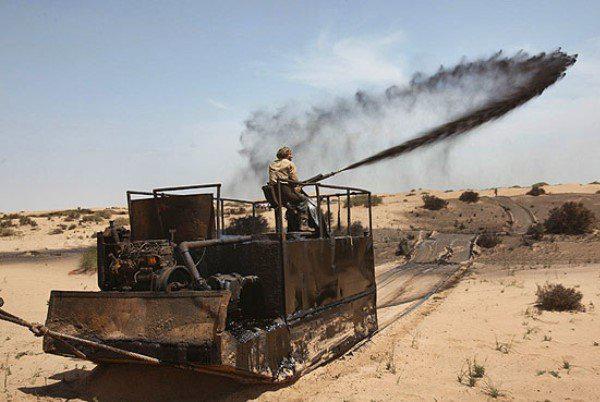Mulching

Bitumen Emulsion for Mulching
The loss of soil by water or wind can be a serious problem in the construction of embankments and flat areas adjacent to highways or in farming land. The most common method of combating this is by vegetation. However, during the period between planting and germination, the seeds may be washed away. Emulsion provides an inexpensive and effective way of combating this. Suitable emulsions are CMS and CSS.
Application of Bitumen Emulsion in mulching
Direct Spray
There are two methods that can be used, in the first, the emulsion is sprayed directly on to the seeded area forming a thin membrane cover. This cover holds the seeds in place, keeps in moisture, and has a hothouse effect in promoting germination. As the young seedlings emerge they break up the surface. This can significantly improve yield.
Application rate is 0.7-1.4 Lt./m2. depending on the soil. The soil should be dampened first.
Mulch Tie Down
The emulsion may be used to anchor straw or hay mulch. First, the hay is spread at 3-4 tonnes per hectare, then a mixture of seed and fertilizer is sprayed. Lastly, around 0.5Lt./m2 of the emulsion is sprayed.
A second method involves blowing hay and spraying emulsion at the same time.
Mulching applications and facts:
- Since bitumen emulsion has ionic structure, its adhesion is very stronger than neutral cutback bitumen for different applications such as Mulching.
- Mulching with bitumen emulsion is flexible and when facing with climatic changes, it is also stable.
- It is completely harmless for the environment and can be applied in ambient temperature.
- Breaking process of Mulching takes less than 2 hours.
- The cost is very efficient.
Anionic Bitumulch Emulsified Bitumen (Mulch Treatment):

Mulch is used to cope with dust and sand dune stabilization. Dust brings great damages to farming lands, urban and industrial plants which are in the vicinity of deserts. Researches in the past years have shown the use of oil mulch causes creating more pollutions over time through the distribution of harmful vapors resulted by heavy crude oil refining; besides, it has high costs and difficult implementation. The lifetime of oil mulch is 1 to 3 years while it doesn’t have proper resistance against 130 km winds. It will cause accelerating gradual decay and crushing time of stabilizing layer and consequently, will help to increase the life of dust. Therefore, Bitumulch is produced with the aim of resolving oil mulch shortcomings and improving sand dune stabilization plans in Iran. It is economic and has acceptable technical quality in comparison with biologic and oil mulch. Some properties of Bitumulch are as the following:
- Cheaper price in comparison with biologic and oil mulch
- Lower implementation costs. (oil mulch needs heating and consequently, very high costs are imposed to projects for site equipping. Whiles, immediately after storm starts, the mulching operation will be stopped and cost of reheating will be imposed to the project.)
- Ability to use available equipment and devices for oil mulch with no need to warm-up.
- Oil mulch has phytotoxic influence because of heat and aromatic compounds and stabilizing operation is not done completely. (which contains the growth of plant species 2 to 3 years after mulching; whiles, emulsified mulch has the least phytotoxic effect. It means that sand dune stabilization is done perfectly after plant germination and growth (in plant rooting out and growth)
- Amount of emulsified mulch consumption is 4-6 tonnes per hectare because of producing process (which cause to create a thin and netting bitumen film over the surface) whiles, oil mulch is used 8 to 10 tonnes per hectare.
Bitumulch is one type of anionic emulsified bitumen and cohesion promoter. This product is manufactured by the company for the first time in Iran and has been applied in Bam city in cooperation with forests and pastures organization.

